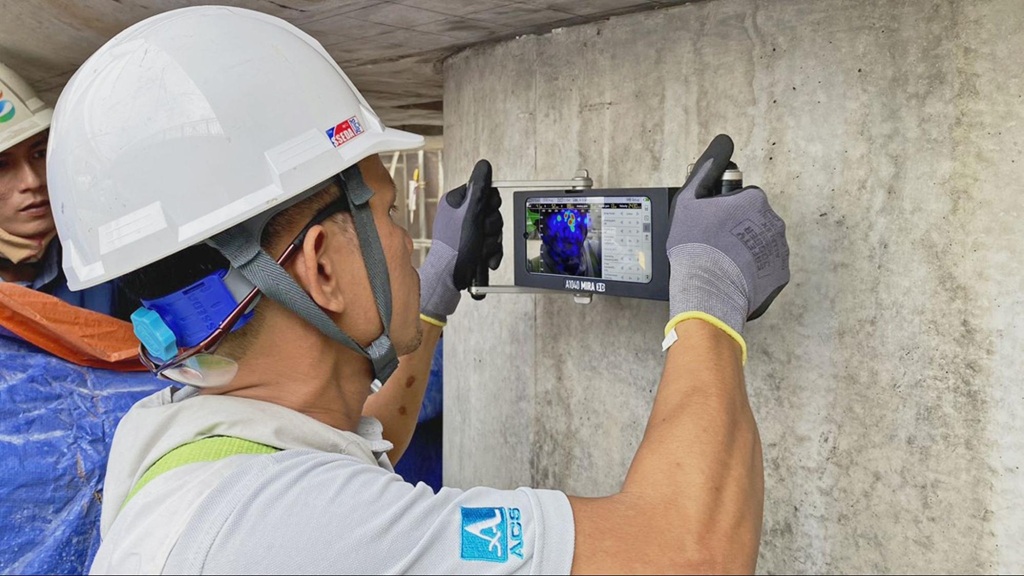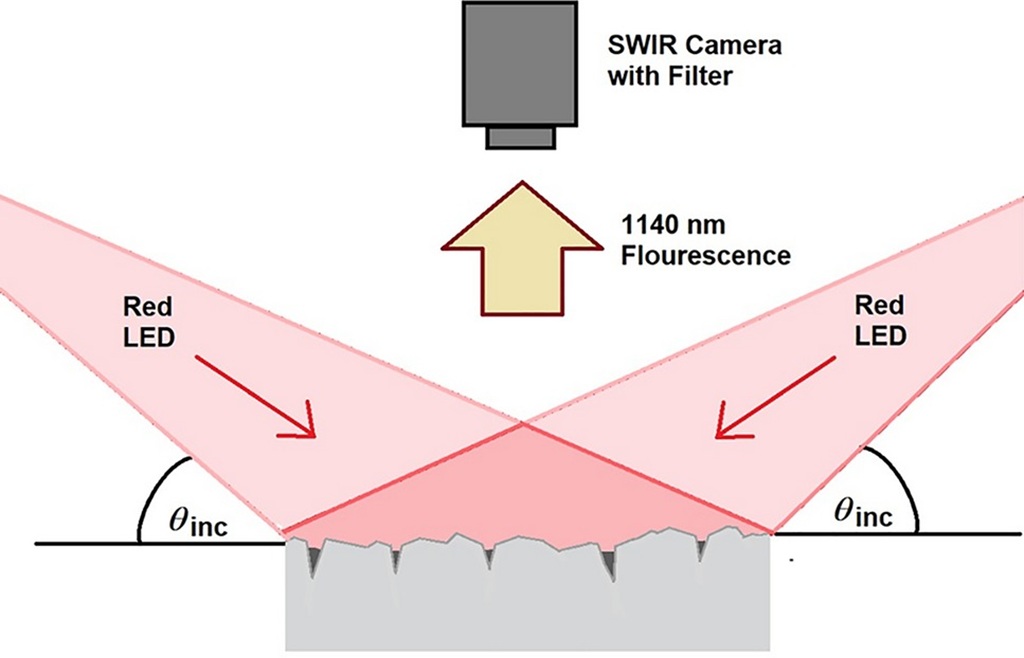Concrete, the bedrock of modern infrastructure, is a remarkably durable material. Yet, even this stalwart substance is susceptible to cracking over time, influenced by factors like environmental exposure, stress, and aging. These cracks, often invisible to the naked eye, can compromise structural integrity, leading to costly repairs and potential safety hazards. This is where ultrasonic crack detection steps in, offering a non-destructive and highly effective method for assessing the health of concrete structures.
The Silent Threat: Understanding Concrete Cracks
Concrete cracks aren’t merely cosmetic blemishes. They represent weaknesses that can propagate and worsen, impacting the structural performance of bridges, buildings, tunnels, and dams. Understanding the underlying causes of these cracks is crucial for effective detection and mitigation.
- Shrinkage Cracks: These occur during the initial curing process as concrete loses moisture, causing it to contract.
- Thermal Cracks: Fluctuations in temperature lead to expansion and contraction, creating stress that can result in cracks.
- Load-Induced Cracks: Excessive loads or overloading can exceed the concrete’s tensile strength, leading to structural cracks.
- Chemical Attack: Exposure to sulfates, chlorides, and other aggressive chemicals can deteriorate the concrete matrix, forming cracks.
- Freeze-Thaw Cracks: In cold climates, water trapped in concrete pores can freeze and expand, causing internal damage and cracking.
- Alkali-Aggregate Reaction (AAR): This chemical reaction between certain aggregates and alkaline pore solutions in concrete produces expansive gels that cause cracking.
These diverse causes highlight the need for a reliable detection method that can penetrate deep into the concrete and reveal hidden flaws.
Ultrasonic Testing: A Window into Concrete’s Integrity
Ultrasonic testing (UT) utilizes high-frequency sound waves to probe the internal structure of concrete. By analyzing the behavior of these waves as they travel through the material, engineers can identify cracks, voids, and other discontinuities.
- Principle of Operation: An ultrasonic transducer generates sound waves that are transmitted into the concrete. These waves travel through the material and are reflected or refracted when they encounter a change in density or material properties, such as a crack.
- Pulse-Echo Technique: This method involves transmitting a short pulse of ultrasound and measuring the time it takes for the echo to return. The time delay is directly related to the depth of the discontinuity.
- Through-Transmission Technique: This method uses two transducers, one to transmit and the other to receive the ultrasound. Changes in the transmitted signal indicate the presence of flaws.
- Surface Wave Method: This technique uses Rayleigh waves, which travel along the surface of the concrete, to detect near-surface cracks.
- Data Interpretation: The received signals are analyzed using specialized software to generate visual representations of the concrete’s internal structure, revealing the location, size, and orientation of cracks.
The non-destructive nature of ultrasonic testing makes it a valuable tool for assessing concrete without causing damage to the structure.
Advantages of Ultrasonic Crack Detection
Ultrasonic testing offers numerous advantages over traditional visual inspection and other non-destructive testing methods.
- Non-Destructive: It avoids damaging the concrete, preserving the structural integrity of the assessed component.
- Depth Penetration: Ultrasonic waves can penetrate deep into concrete, allowing for the detection of internal cracks and flaws that are not visible on the surface.
- Accuracy and Precision: It provides accurate measurements of crack depth, size, and location, enabling precise assessment of damage.
- Versatility: Ultrasonic testing can be used on various concrete structures, including bridges, buildings, dams, and tunnels.
- Speed and Efficiency: It allows for rapid assessment of large areas, reducing inspection time and costs.
- Early Detection: It can detect cracks at an early stage, enabling timely repairs and preventing further damage.
- Quantitative Data: Provides measurable data, which facilitates more accurate analysis and better informed decisions.
These advantages make ultrasonic testing an indispensable tool for proactive maintenance and ensuring the longevity of concrete infrastructure.
Practical Applications and Case Studies
Ultrasonic crack detection is widely applied in various infrastructure projects, contributing to improved safety and durability.
- Bridge Inspection: Regular ultrasonic testing of bridge piers, decks, and beams helps identify cracks caused by traffic loads, environmental exposure, and aging.
- Building Assessment: It is used to evaluate the structural integrity of concrete walls, columns, and foundations in buildings, detecting cracks caused by settlement, seismic activity, and construction defects.
- Dam Safety: Ultrasonic testing of dam structures is crucial for detecting cracks that could compromise water retention and lead to catastrophic failures.
- Tunnel Inspection: It helps identify cracks in tunnel linings caused by ground movements, water seepage, and blasting operations.
- Nuclear Power Plants: Due to the critical safety concerns, ultrasonic testing is vital for inspecting the concrete containment structures in nuclear power plants.
- Precast Concrete Inspection: In precast plants, ultrasonic testing is used for quality control, ensuring that elements meet the required standards before installation.
Case studies demonstrate the effectiveness of ultrasonic testing in preventing structural failures and extending the lifespan of concrete structures.
Technological Advancements and Innovations
The field of ultrasonic crack detection is constantly evolving, with ongoing research and development leading to advancements in technology and techniques.
- Advanced Transducers: New transducer designs offer improved sensitivity and resolution, enabling the detection of smaller cracks.
- Phased Array Technology: This technology utilizes multiple transducers to generate focused ultrasonic beams, providing detailed images of the internal structure.
- Full Matrix Capture (FMC) and Total Focusing Method (TFM): These advanced imaging techniques provide high-resolution cross-sectional images of concrete, revealing the size and shape of cracks with greater accuracy.
- Artificial Intelligence (AI) and Machine Learning (ML): AI and ML algorithms are being integrated into ultrasonic testing systems to automate data analysis and improve the accuracy of crack detection.
- Wireless and Remote Monitoring: Wireless sensors and remote monitoring systems enable continuous monitoring of concrete structures, providing real-time data on crack growth and propagation.
- Robotic Inspection: Remotely operated robots equipped with ultrasonic transducers can access hard-to-reach areas, improving inspection efficiency and safety.
These innovations are enhancing the capabilities of ultrasonic crack detection, making it an even more powerful tool for assessing concrete integrity.
Read More Also: Safeguarding Steel: Unraveling the Secrets of Fire Protection Coatings
People Also Ask – FAQs
-
Q: How accurate is ultrasonic crack detection in concrete?
- A: Ultrasonic testing provides highly accurate measurements of crack depth, size, and location, typically within a few millimeters. The accuracy depends on factors such as the transducer frequency, concrete properties, and operator expertise.
-
Q: Can ultrasonic testing detect cracks in reinforced concrete?
- A: Yes, ultrasonic testing can detect cracks in reinforced concrete. However, the presence of reinforcing steel can complicate data interpretation. Advanced techniques and experienced operators are needed for accurate assessment.
-
Q: What are the limitations of ultrasonic crack detection?
- A: Limitations include the need for a smooth surface for transducer coupling, difficulty in interpreting data from complex geometries, and potential interference from internal reinforcement.
-
Q: How often should concrete structures be inspected using ultrasonic testing?
- A: The frequency of inspection depends on the age, condition, and criticality of the structure. Regular inspections are recommended for structures exposed to harsh environments or subjected to heavy loads.
-
Q: What are the costs associated with ultrasonic crack detection?
- A: The costs vary depending on the size and complexity of the structure, the scope of the inspection, and the expertise of the testing personnel.
-
Q: Is ultrasonic testing safe for concrete?
- A: Yes, ultrasonic testing is a non-destructive method and does not cause any damage to the concrete.
Read More Also: Reaching for the Sky: The Intricate Structural Design of Rooftop Pools
Conclusion: Ensuring the Longevity of Concrete Infrastructure
Ultrasonic crack detection has emerged as a vital tool for assessing the health of concrete structures, enabling the early detection of flaws and preventing costly failures. As technology continues to advance, ultrasonic testing will play an even greater role in ensuring the safety and longevity of our infrastructure. By embracing this powerful non-destructive technique, engineers and asset owners can proactively address concrete degradation, safeguarding the foundations of our modern world.





